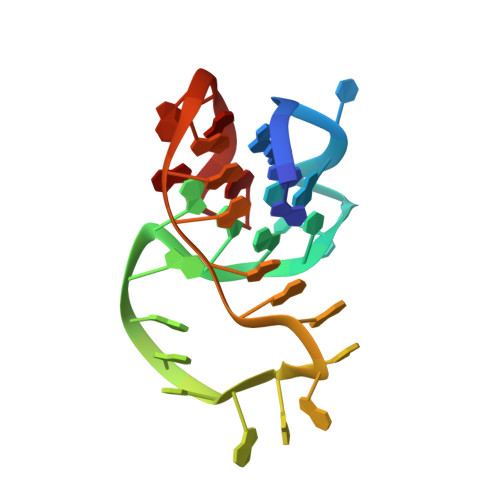Structure of two G-quadruplexes in equilibrium in the KRAS promoter.
Marquevielle, J., Robert, C., Lagrabette, O., Wahid, M., Bourdoncle, A., Xodo, L.E., Mergny, J.L., Salgado, G.F.(2020) Nucleic Acids Res 48: 9336-9345
- PubMed: 32432667
- DOI: https://doi.org/10.1093/nar/gkaa387
- Primary Citation of Related Structures:
6SUU, 6T2G - PubMed Abstract:
KRAS is one of the most mutated oncogenes and still considered an undruggable target. An alternative strategy would consist in targeting its gene rather than the protein, specifically the formation of G-quadruplexes (G4) in its promoter. G4 are secondary structures implicated in biological processes, which can be formed among G-rich DNA (or RNA) sequences. Here we have studied the major conformations of the commonly known KRAS 32R, or simply 32R, a 32 residue sequence within the KRAS Nuclease Hypersensitive Element (NHE) region. We have determined the structure of the two major stable conformers that 32R can adopt and which display slow equilibrium (>ms) with each other. By using different biophysical methods, we found that the nucleotides G9, G25, G28 and G32 are particularly implicated in the exchange between these two conformations. We also showed that a triad at the 3' end further stabilizes one of the G4 conformations, while the second conformer remains more flexible and less stable.
Organizational Affiliation:
European Institute of Chemistry and Biology (IECB), ARNA laboratory, INSERM U1212 - CNRS UMR 5320, University of Bordeaux, France.















